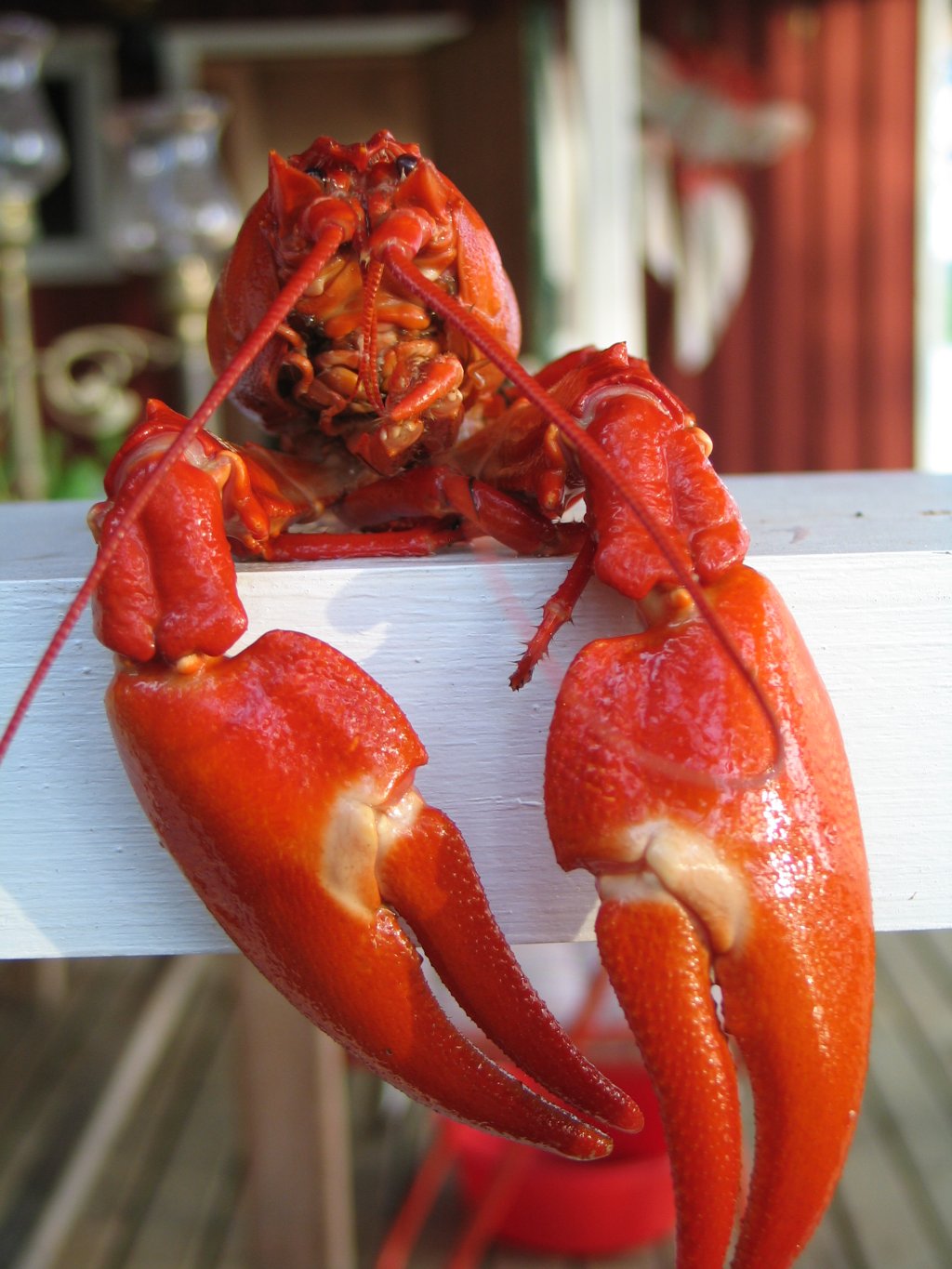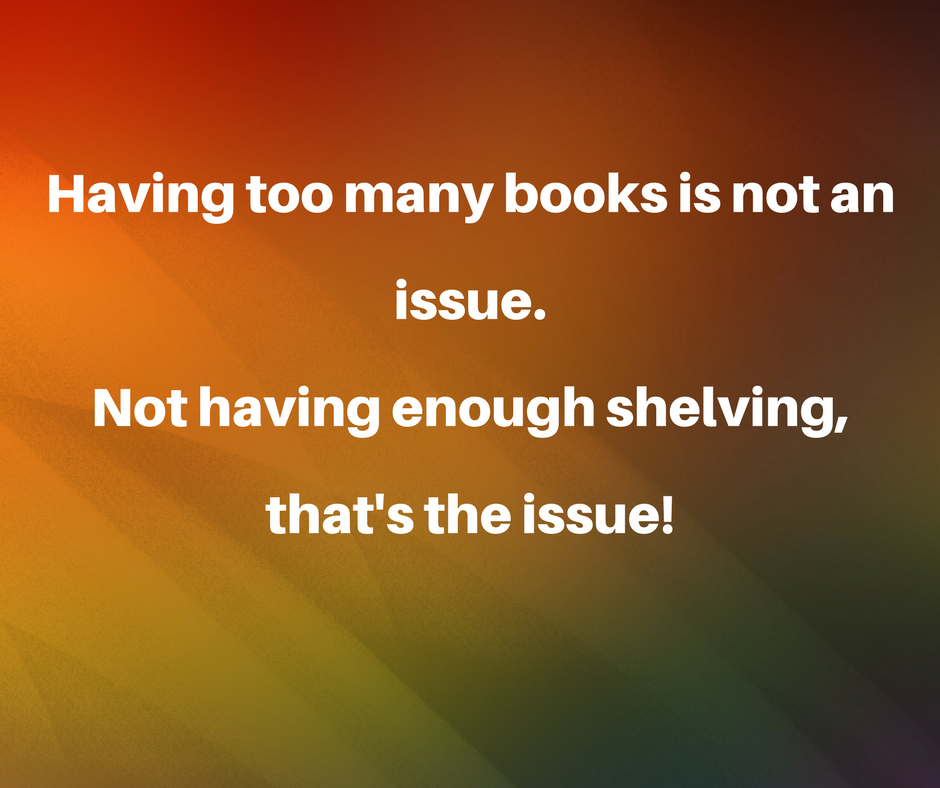Going, going, gone…
Crayfish wars mirror the plight of the British bookshop. The invasive, North American signal crayfish took over the natives' habitat.
In the 1970s, the British government introduced a small, lobster-like creature called the signal crayfish into our waters. A plague was ravaging our own population and the signal crayfish from the US was seen as an attractive commercial prospect to help bolster the native species. However, the signal was also a carrier of crayfish plague, and its introduction just worsened the spread of the deadly disease to our own white-clawed population.
This invasive American cousin soon began to escape from commercial fisheries and out-compete the native white-clawed crayfish for both habitat and food.
In 2008, anglers were issued with a 'kill on sight' warning by the Environment Ministry. The introduction of a new species almost wiped out our own endangered native crayfish populations.
Book wars
The crayfish story is somewhat of a metaphor for what is going on in our high streets with the imminent sale of the Waterstones bookshop chain, (which appears to be about to be sold to a private equity firm). And more than that, a metaphor for the future of physical books.
Back in 2011, struggling high street record chain, HMV, offloaded Waterstones bookstores to Alexander Mamut for £53 million. Mamut was a banker and friend of the store’s original founder, Tim Waterstone.
Mamut, who had some experience of running book stores with Waterstones in Moscow, installed banker turned bookseller, James Daunt, as Waterstones’ managing director. His brief? To stop the company haemorrhaging cash and ostensibly, to make it ready for resale.
But, by 2011, a plague was already ravaging our native book market half to death. Stronger, fitter competitors were already taking over its habitat. I call it a plague only because it was something that the UK book market couldn’t deal with, much like our native crayfish. They were called ebooks. But again, like the signal crayfish, it was our own fault that they were here in the first place.
Fans of physical books may lay the poor outlook for Waterstones squarely at Amazon’s feet, yet many in the book industry at the time, including Waterstones themselves, have contributed to their demise.
The Net Book Agreement, which had regulated the price of paperback books for many years, was torn up in the 1990s and ruled as anti-competitive. This move was aided and abetted by Waterstones themselves, who decided not to abide by the agreement and began discounting books in their stores, leading to court cases and disagreements. Waterstones was earning £27 million per year from publishers paying to have their books placed on tables, in windows and in 3-for-2 deals. Supermarkets such as Tesco and Asda began selling cut price books in store, sometimes for as little as £2.00 per copy – and sometimes below the cost of producing them in the first place.
With the natural habitat for physical books decimated due to costs, books and their authors looked for new ways to survive. Much like music did, books began moving online.
In 2006, Waterstones, who had themselves helped to introduce new cut-throat competition into their own marketplace in the form of discounted supermarket sellers, launched Waterstones.com, to sell ebooks and physical books online.
Incredibly, if you had typed Waterstones.co.uk into the internet between 2001 and autumn 2006, you would have been taken to a page within the Amazon.co.uk site in an online tie-up between the retailers.
Amazon launched its first Kindle e-reader in the USA in 2007, for the sum of US$399. It allegedly sold out in just five and a half hours. By 2010, sales of the device had begun on UK shores. By the final quarter of 2010, Amazon had garnered more than a 50 per cent share of the e-reader market.
In September 2011, shortly after taking control of the high street chain, James Daunt announced on BBC Radio 4 that Waterstones would launch its own e-reader, as “a serious rival to the Kindle” the following spring. For a high-street-based, physical bookseller, this surely was a declaration of future suicide?
“...Books sold on the Kindle are now outpacing the hardcover books Amazon sells. In the past three months, for every 100 hardcover books sold, Amazon.com has sold 143 Kindle books, they say. And that gap is getting wider. In the past month, for every 100 hardcover books sold, there have been 180 Kindle books sold through Amazon.”
Spotted on the Waterstones' shop floor - mid 2017 - the 'New Books' section completely filled with toys, games and novelties.
But even then, Waterstones along with the rest of the publishing industry were playing catch up - Amazon was ravaging their habitat and there was little they could do about it.
With a low uptake on competing e-readers, such as Barnes & Noble’s Nook for example, the Kindle won the race to become the number one e-reading device for mainstream consumers worldwide.
Losing money hand over fist, with £100m of sales disappearing in an 18-month period, Daunt undertook a massive restructuring of Waterstones. Around 200 of Waterstones' 487 branch managers left the company. Between 2011 and 2018, total staff numbers were cut by around 1,500 - down from 4,500 to 3,000 - in a process described in the press as “brutal and awful”.
“...If the bookshops go, they will never come back.”
Unable to keep up with huge high street rental prices, Daunt also closed many seemingly profitable, prominent stores, and moved or amalgamated others. As the Bookseller reported back in February 2014, shops in “inappropriate” locations or those whose customer bases overlap, were shuttered as and when their leases came up for renewal.
Daunt also strove to drive down returns. More than one in four books printed and delivered to Waterstones sits on the shelves for a couple of months before being repacked and sent back to publishers. On big name celebrity titles, return rates could be as high as 80 per cent. Incredibly, processing unsold books was taking up more than half of his workforce’s time - with books returned to publishers and/or sent straight for pulping, and only a small amount ultimately distributed among prisons, libraries and charity shops.
Toys, games and novelties started off as just ten per cent of the Waterstones' in-store range. This section has been increased massively in the last eighteen months in a desperate attempt to subsidise pitiful book sales.
Despite this huge restructuring, the company’s latest accounts show that Waterstones’ ongoing existence remains largely down to the funding by its Russian owner. According to The Evening Standard, “latest figures state Waterstones Holdings owes £138.7 million and paid £9.7 million in interest”.
Amazon now has virtually no competition in the ebook market at all. And twelve years after launching Waterstones.com, the UK bookstore’s online profitability is still only similar in value to that of its Piccadilly store.
Waterstones says it didn’t foresee online books coming, but the writing has been on the tablet for many years. Perhaps if they’d been earlier to market with their own e-reader in a deal with the big five publishers, or taken their launch of Waterstones.com seriously, they might have stood some chance of salvaging the situation?
Yet, throughout its entire history, Waterstones appears to have had a complete aversion to anything remotely new. Even in more recent years the company has deliberately avoided anything digital. Take those new-fangled things called email addresses, as I blogged about back in summer 2016. It’s almost as if Waterstones has been so busy firefighting just to stay afloat, that it has failed to notice any single new development in the publishing industry over the past two decades.
For people reading five books a week (yes Videcette fans, I know who you are!) the purchase of a basic Paperwhite Kindle means they can now store a minimum of 1,100 books in their home at any one time. Kindle now means that good, hardworking Indie authors with no agent or publishing contract can easily shift 10,000 paying Kindle copies of a single new title, in its first month of launch.
Because these figures are hidden in the depths of Amazon data and are not included by Nielsen figures or in the Publishers Association reports, Kindle sales are still vastly underestimated. Share these figures with most people in the traditional publishing industry and they will look at you as if you are speaking Martian or suffering from hallucinations – and believe me, I’ve experienced those looks.
Daunt Books, where James Daunt started out his bookselling career before becoming Waterstones' managing director.
Back in 2013, James Daunt similarly dismissed worries that customers might disappear with their e-readers into the virtual ether. He was convinced only a small minority would abandon paper books altogether.
Fast forward to January 2018, and you will hear the following statements from members of book clubs up and down the country:
“That’s it. I’m done. No more paperbacks. I’m Kindle app all the way.”
“My husband has banned me from buying paperbacks. We have no more space. I am a Kindle convert.”
"The only problem with buying new books is finding somewhere to put them! Thank goodness for my Kindle!"
A now regular sight on the Waterstones shop floor - the bargain bin appeared from mid 2017 onwards.
Personally, I love the feel of a physical book in my hands, its smell, and the noise of the pages as I turn them and devour its contents. But, exactly in the same way as I've ditched my vinyl collection, even I do most of my reading on an electronic device nowadays. And because unbelievable quantities of books are returned by book retailers to publishers, I do believe that physical books can be worse for the environment - the cutting down of the trees; all the energy and chemicals involved in producing them; the storage and distribution and the pulping or landfill of them when they remain unsold. Once you've bought and read a book, it takes up space, gathers dust - the charity shops refuse to take any more of certain titles - and I begin to begrudge seeing it sitting on my shelf.
I’m sorry Waterstones, but I think your days are numbered. Fiction books in physical format appear to be going the way of our native crayfish. And if I’m honest, the signal crayfish tastes much better.
David Videcette is a former Scotland Yard detective and the author of the DI Jake Flannagan thrillers based on real events.
His thrillers are available in both ebook and paperback and via Waterstones.
He has replaced his love of physical books with the Kindle, due to the costs that a home extension would entail.


















